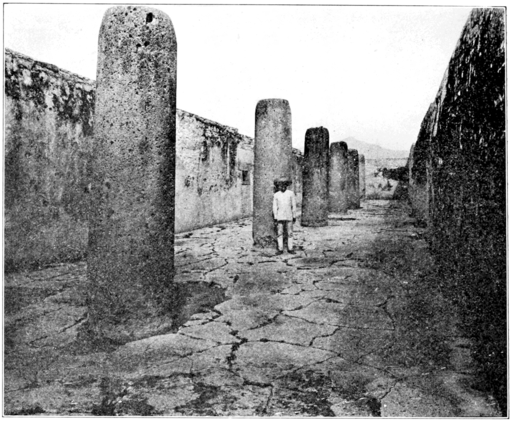surpassing the big sequoias of California. The height, however, as may be seen from the picture, is not so great. Botanically, the tree is Taxodium macronatum, and it is commonly called the Montezuma cypress. The Noche triste tree in the City of Mexico belongs to the same species. The swamp cypress of our southern states, Taxodium distichum, belongs to the same genus, but not to the same species. Without trying to find any fault with the tree, one might hazard the suggestion that it may represent three trees grown together so that nothing but peculiarities in the branching remain to indicate a multiple origin. The Humboldt inscription, placed there by the great explorer, is on the opposite side of the tree from that shown in the picture, but is now almost entirely overgrown. There have evidently been other inscriptions, but they too are overgrown, and a formidable tablet warns the public against defacing the tree, perhaps referring to the vicious American habit of cutting unimportant names in conspicuous places. There are recent tablets, flat on the ground at the base of the tree, with large letters made of the teeth of cattle. If it is all one tree, its age could not be less than three or four thousand years. In the same churchyard there is another Montezuma cypress, twelve feet in diameter, which shows not only in its general habit, but in its branching, that it is a single tree.
The road from Tule to Mitla is sandy and dusty, but the scenery


